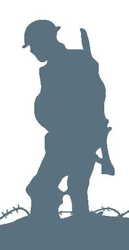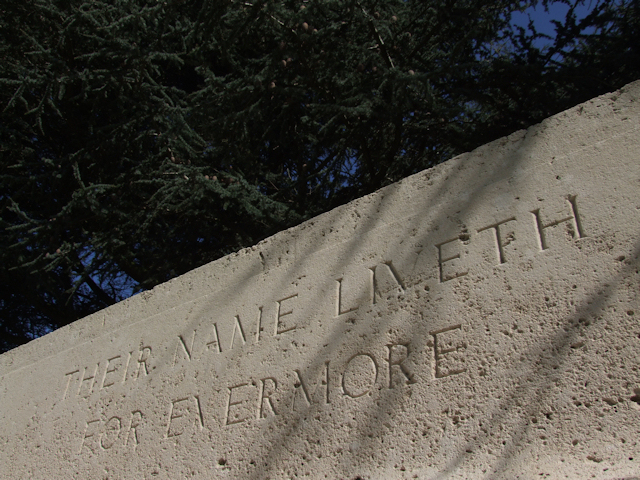Name
Charles John Hitchcock (*1)
1888
Conflict
First World War
Date of Death / Age
10/10/1918
30
Rank, Service Number & Service Details
Sapper
369634
Royal Engineers
J Depot Coy.
Awards: Service Medals/Honour Awards
Searched but not found
Cemetery/Memorial: Name/Reference/Country
KIRKCUDBRIGHT (ST. CUTHBERT) OLD CHURCHYARD
United Kingdom
Headstone Inscription
None
UK & Other Memorials
Hemel Hempstead Town Memorial, St Mary's Church Memorial, Apsley End, John Dickinson & Co Memorial, Apsley Mills, Not on the Apsley memorials
Pre War
Charles John Hitchcock was born in December 1888 at Bury Hill, Hemel Hempstead, the eldest son of John and Annie Hitchcock, and baptised on 31 March 1889 at St Paul's Church, Queen Street, Hemel Hempstead. He was one of 10 children, although his brother Stanley died in 1899 aged one year.
On the 1901 Census the family were living at 1 Apsley Road, Hemel Hempstead where his father was working as a Gravedigger. Charles left school in 1902 and started working at Dickinson & Co, paper manufacturers of Apsley Mills where he trained as a printer.
He married Ellen Mary Tungate Alecock on 27 May 1912 at St Paul's Church, Hemel Hempstead. Like Charles, she had been working at Dickinsons. They had two children, Ellen and Elsie, born in 1913 and 1915 and initially lived at Railway Terrace, in Kings Langley to be near Ellen's mother and their place of employment at Dickinsons.
His widow later lived at 65 Ebberns Road, Apsley End, Hemel Hempstead after her remarriage in 1921 to George Lee.
Wartime Service
At the outbreak of war, when Charles was working at John Dickinsons as a printer. His occupation was reserved as an essential skilled job and permission had to be sought from the firm by any employee who wanted to volunteer. Eventually, in June 1916 he attested (possible conscripted) and was posted to the Army Reserve to await call up, which came in July 1917 when he was mobilised and sent for basic training with the 103rd Training Reserve Battalion.
He was given the medical category of B1 (Garrison Service Abroad) because of a history of heart palpitations, and initially served in the Scottish Horse Yeomanry (converted to a Cycle Battalion), in Fife, Scotland. The following year he was sent to Ballycannon Barracks, Limerick, Ireland and transferred to the Royal Engineers as a Sapper on 30 April 1918, attached to the Garrison staff of Curragh Camp, Ireland.
Having been granted home leave, on 10 October 1918 he was on board the RSS Leinster, a mail and passenger ship, which set sail at 9.00 am from Kingstown (Dun Laoghaire), enroute to Holyhead, Wales, when it was hit by a German torpedo. There were 813 people on board. the largest group being military personnel, mainly coming from or going on leave. There were soldiers, sailors, airmen and nurses from Ireland, Wales, England, Scotland, Guernsey, United States, Canada, Australia and New Zealand, including a Wren from Cork who was the first member of the Women's Royal Naval Service to the killed on active service.
The first torpedo, which came from the UB-123, was seen by a few people on the deck just before 10.00 am, which missed the ship, but the second hit on the port side in the area of the postal sorting room and 21 postal sorters on duty were killed. It travelled through and made a hole in the starboard side. Although the ship was sinking, there were initially few casualties. Lifeboats were being launched, when another torpedo struck, practically blowing it to pieces. The sea was rough and many survivors were clinging to rafts and flotsam and died while awaiting rescue. The survivors were landed at Dun Laoghaire.
A few days later, on 18 October, while returning to Germany, UB-123 struck a mine in the North Sea and sunk with no survivors.
Charles was initially missing, believed drowned as a result of the torpedoing of S S Leinster on 10 October 1918. His body was later recovered, having been washed ashore in Scotland and interred along with 4 other service personnel, in Kircudbright (St Cuthbert) Old Churchyard, Scotland. The majority of the other soldiers and sailors who died are buried in Ireland.
(Although his medal card has not been found, he would have been eligible for the Victory Medal and British War Medal. )
Additional Information
*1 Believed to appear as J Hitchcock on the John Dickinson & Co Aspley Mill Memorial.
His widow received a war gratuity of £6 and pay owing of £11 4s 6d. She also received a pension of £1 5s 5d a week for herself and her two children. Brother to Frederick William Hitchcock who died of malaria on 25 November 1918 and is buried in Alexandria (Hadra) War Memorial Cemetery, Egypt. N.B. the St Mary's Memorial, Apsley End, has Charles listed as J Hitchcock, suggesting he may have been known by his second name of John.
Acknowledgments
Brenda Palmer
Jonty Wild, rmsleinster.com, www.hemelatwar.org., www.dacorumheritage.org.uk., www.hemelheroes.com.



